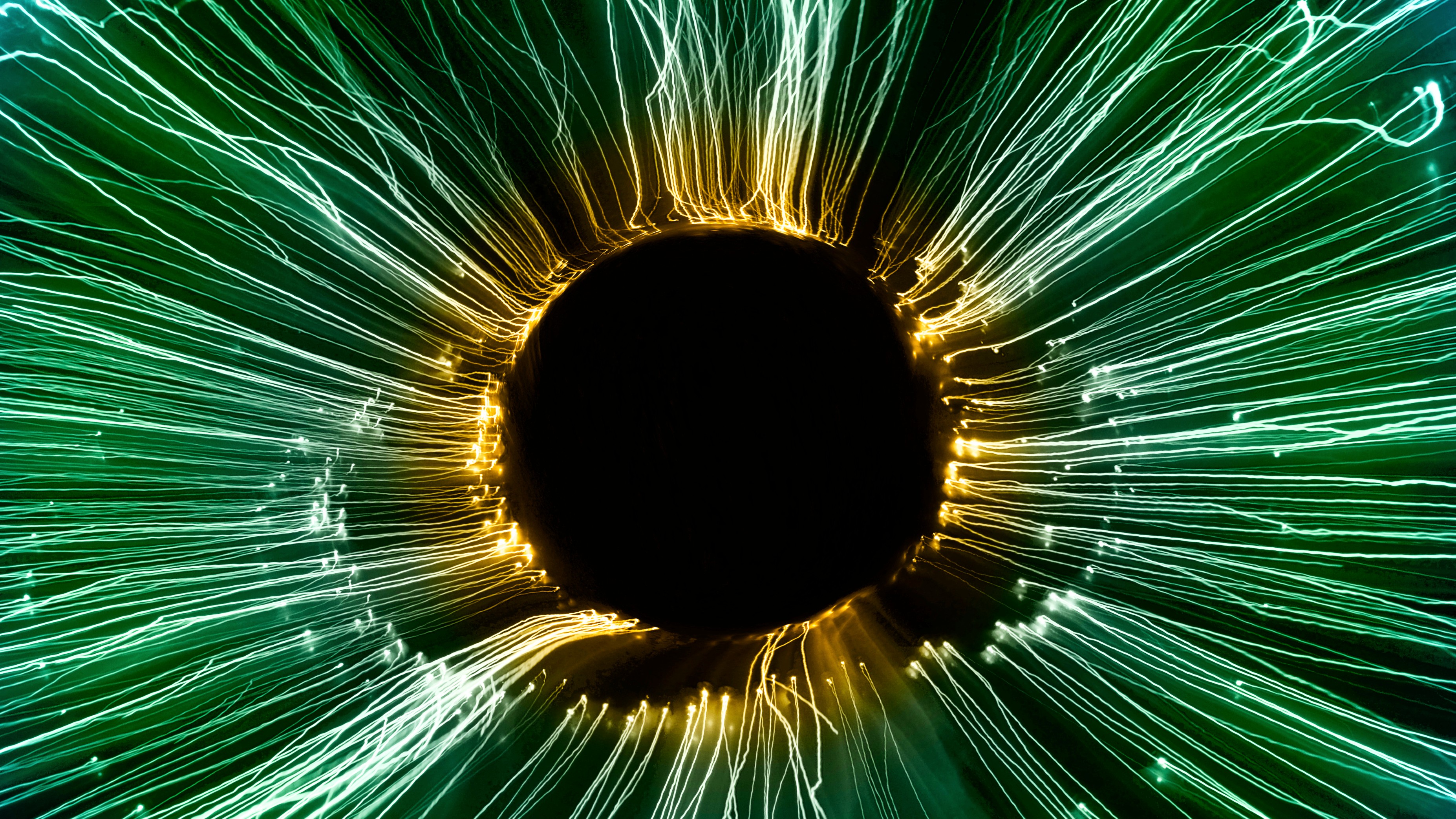The Nobel Doesn’t Mean Gravitational Wave Astronomy Is Over; It’s Just Getting Good

Why the 2017 Nobel Prize isn’t the end, but the start, of something really, really big.
“Wormholes are a gravitational phenomena. Or imaginary gravitational phenomena, as the case may be.” –Jonathan Nolan
Last week, the 2017 Nobel Prize in Physics was announced: to Rainer Weiss, Barry Barish, and Kip Thorne, for their pioneering contributions to gravitational wave astronomy. Of course, the real winner is the LIGO Collaboration, which has consisted of over 1,000 people over a span of more than 40 years. As their experimental apparatus became more and more developed, it grew more sensitive, and capable of detecting progressively smaller ripples in spacetime. In 2015, all those efforts culminated in the first-ever direct detection of a gravitational wave, arising from the merger of two massive black holes some 1.3 billion light years away. The twin LIGO observatories had come through in an incredible fashion, detecting a wave that had compressed the entire Earth by less than the size of an atom.
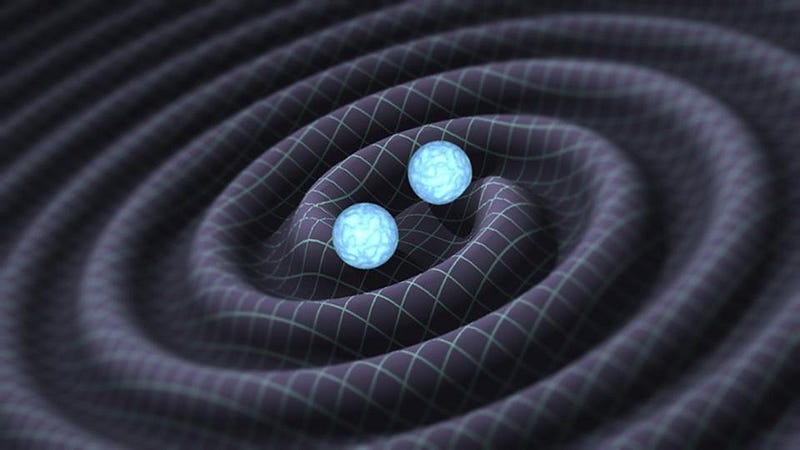
There was an incredible amount that we can learn from the detectable signal that makes it to the interferometer’s arms. As the gravitational wave passes through Earth, and therefore, through the detector:
- the dimension that’s expanding will cause the detector arm to lengthen,
- while the perpendicular dimension will contract, causing the other detector arm to shorten,
- with the amplitude and period of the wave corresponding to the masses and periods of the inspiraling masses,
- with the appropriate stretch/redshift determined by the Universe’s expansion history,
- and where we can determine the amount of mass converted into energy, as dictated by the magnitude of the received signal.
The way this information is extracted is through the relative motion of the two perpendicular laser arms that make up an interferometer.
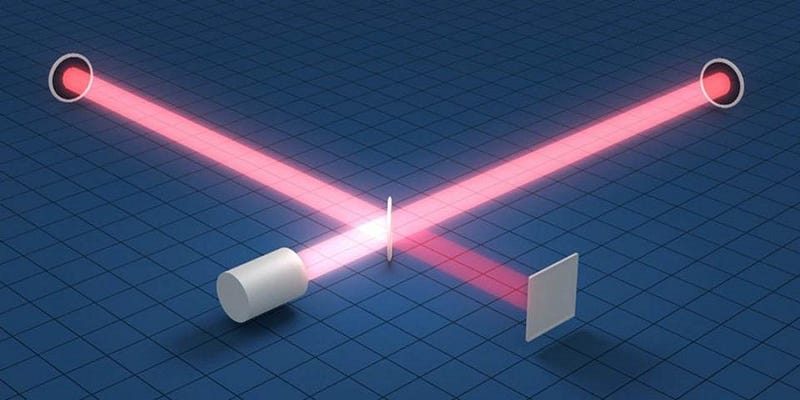
As light travels down this long path, hits a mirror and reflects back, the amount of time the light spends on its journey is dependent on the path length. Even a tiny change, even a change smaller than a single atom, will affect the light-travel-time. After a thousand reflections or so, the light from each perpendicular arm is brought back together, and a specific interference pattern emerges. If the light is in-phase, you get 100% constructive interference; if the light is out-of-phase, you get 100% destructive interference. It’s the changes in the patterns, over time, extracted from the noise, that allows us to reconstruct exactly what type of gravitational wave signal has passed through.
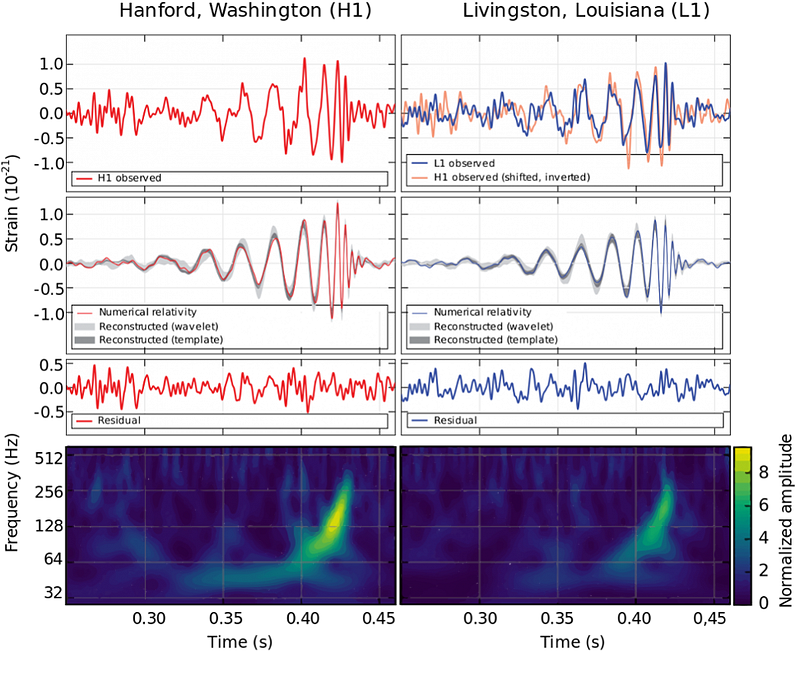
The thing is, as great as LIGO was on its own, with only two detectors located not all that far apart on Earth, it was limited in terms of what information it could learn. The detectors may have been smartly oriented at a 45-degree angle to one another, but they’re roughly in the same plane on Earth, since Lousiana to Washington isn’t that far away. The arrival time of the waves differs by a tiny amount, allowing us to confirm that they move at the speed of light, but not allowing us to constrain the location of the signal very well on the sky. And the fact that we can’t measure location very well means there’s very little opportunity to take the next great step: to correlate the light-emitting sky with the gravitational wave sky.
But that’s where the next great leap comes in.
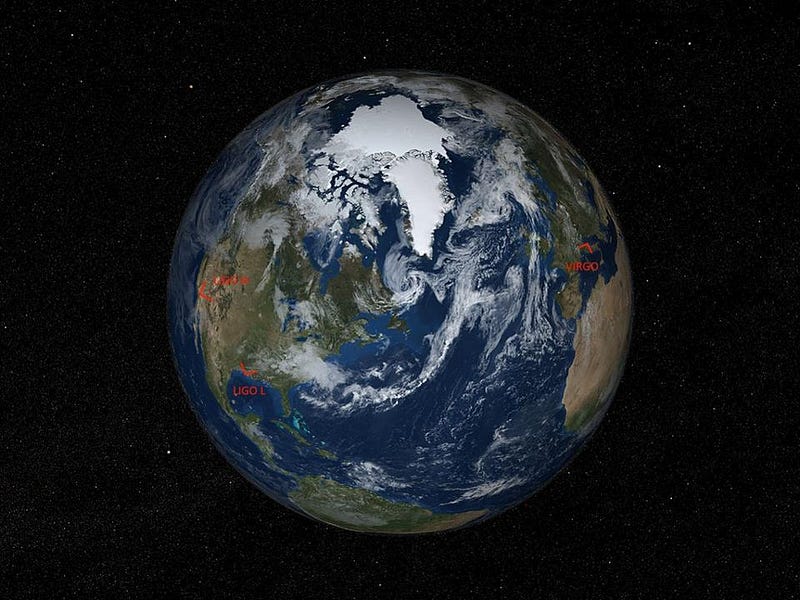
Earlier this year, the VIRGO detector in Italy joined the two LIGO detectors, already operating. At 3/4 the size of LIGO, it’s not quite as sensitive to gravitational waves, but over time its sensitive will improve, just as the LIGO detectors’ has. But the great advantage of adding VIRGO to the LIGO array is that a triple detection offers the advantages that we’ve been sorely missing with only two. Think about what happens as a gravitational wave, shown below, passes through the Earth. And keep in mind, as you visualize this, how far apart the VIRGO detector is from the twin LIGO detectors.
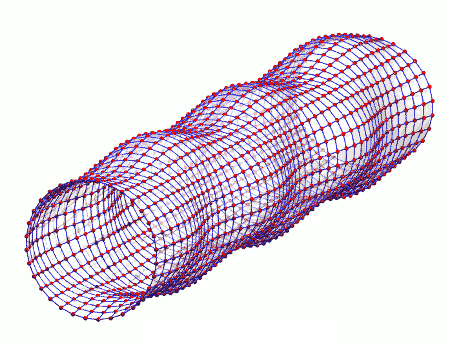
Space may be contracting and expanding in two perpendicular directions, but the amount that the detector responds will be dependent on the wave’s orientation. By adding a third detector on a different part of the globe, we can determine what general direction the wave came from, and also measure its polarization. By measuring the time-detection difference between the arrival of the waves at detectors much farther apart, we can better directly constrain the speed of gravity to be exactly equal to the speed of light. But the best advance of all comes from being able to locate the cosmic point where the wave originated. This is the biggest advance of having a third detector in tandem with the pre-existing two.
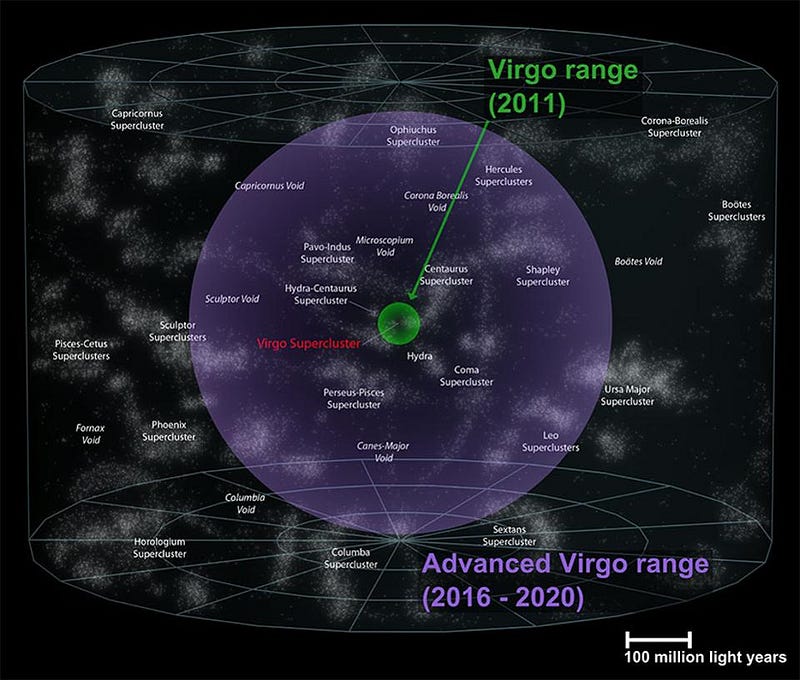
When a gravitational wave signal arrives, you can measure how the arms contract-and-expand. The amplitude and frequency of the wave allows you to determine lots of properties about the merger, but not where on the sky it occurs. Basically, it allows you to draw a thin, spherical shell around your detector, and say that the origin of the wave occurred somewhere in that range. With a second detector, you’ll have some information about the direction-of-propagation of the wave, as well as a second thin sphere; where the two spheres overlap (generally along a wide circle) and back towards the direction of the wave allows you to make an arc-like constraint. But with a third detector, you’re adding a third sphere that’s, in general, out of the plane of the other two. Instead of an arc, you simply get a single point, albeit with error bars.
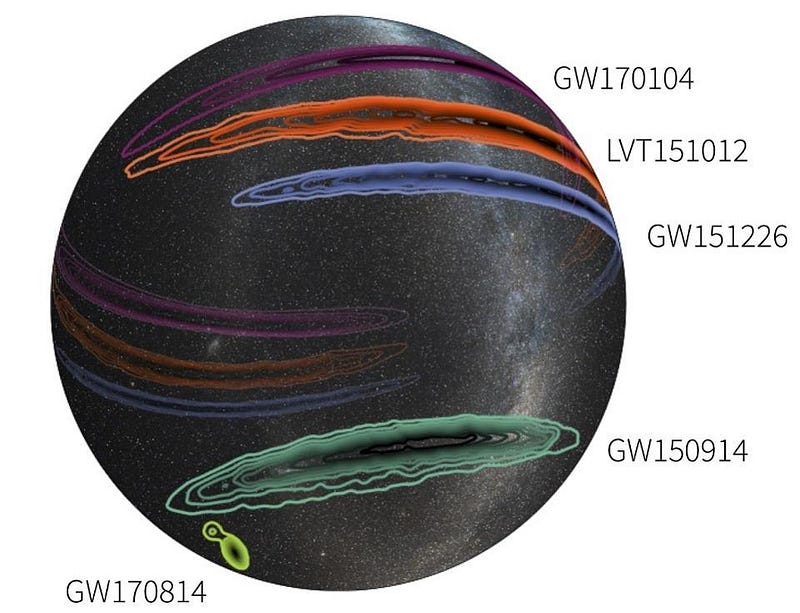
The fact that two more detectors are coming online in the next few years — KAGRA in Japan and then another LIGO detector in India — means we’ll get even tighter constraints on position in the future. Now that we’ve directly seen four gravitational wave events, we’re becoming faster at identifying their locations, meaning we can perform optical and other electromagnetic follow-ups even faster. And if we start to see merging neutron stars with our gravitational wave detectors, we actually anticipate that there should be a visible signal to go with them.
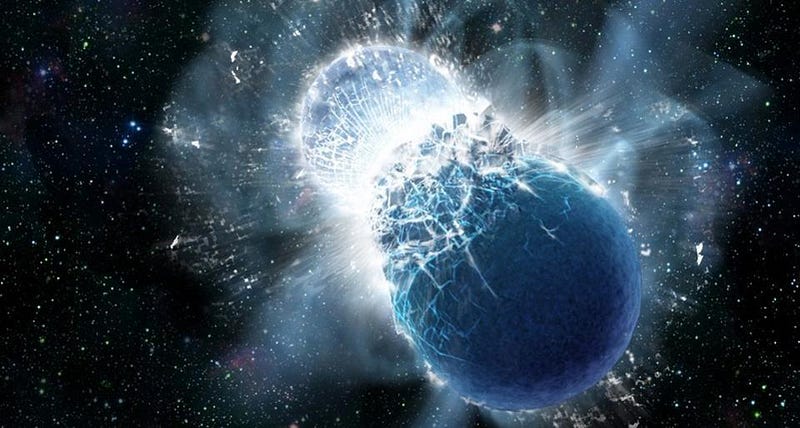
We haven’t just detected gravitational waves directly, we’ve begun exploring in the era of gravitational wave astronomy. We aren’t just seeing the sky in a whole new way; we’re getting better and better at seeing it, and learning what we’re looking at. Because these events are transient, existing only for a short amount of time, we right now only get one opportunity to view these black hole-black hole mergers. But as time goes on and our detectors continue to improve, we’re going to continue to see the Universe as we never have before. The Nobel Prize may have been for already completed research, but the true fruits of gravitational wave astronomy are still out there amidst the great cosmic forest. Thanks to the groundwork laid by 100+ years of scientists, for the first time, it’s picking season.
Ethan Siegel is the author of Beyond the Galaxy and Treknology. You can pre-order his third book, currently in development: the Encyclopaedia Cosmologica.


